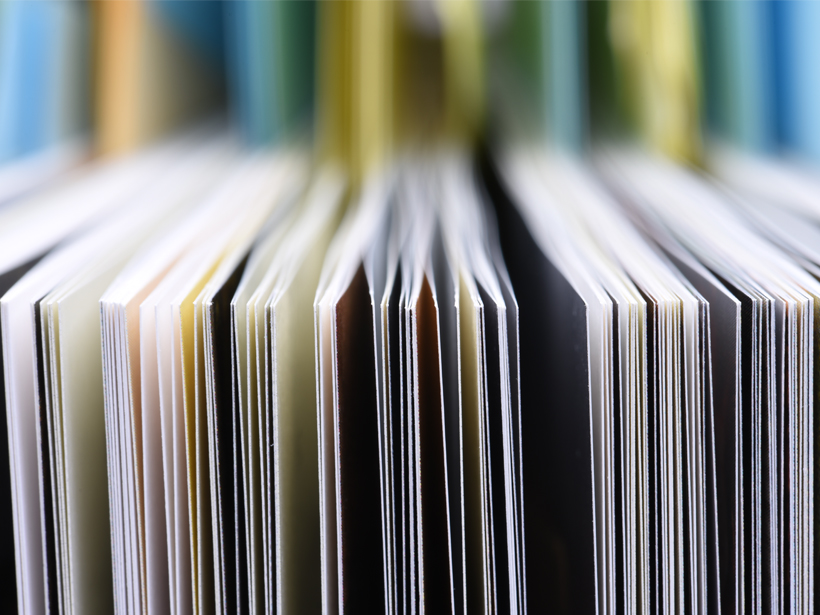This distinguished group of EICs embodies AGU’s mission of promoting discovery in Earth and space science for the benefit of humanity.
AGU is pleased to announce the appointment of new editors in chief (EICs) to oversee six of our renowned Earth and space science journals.
This distinguished group of EICs embodies AGU’s mission of promoting discovery in Earth and space science for the benefit of humanity. AGU strives for inclusive and global representation across its journal editorial boards.
The incoming editors are as follows:
- Earth’s Future: Amir AghaKouchak, Associate Professor, Department of Civil and Environmental Engineering and Earth System Science, University of California, Irvine. AghaKouchak’s research focuses on natural hazards and climate extremes and crosses the boundaries among hydrology, climatology, and remote sensing.
- Earth’s Future is a transdisciplinary, gold open access journal examining the state of the planet and its inhabitants, sustainable and resilient societies, the science of the Anthropocene, and predictions of our common future through research articles, reviews, and commentaries.
- Journal of Geophysical Research (JGR): Space Physics: Michael Balikhin, Professor, Department of Automatic Control and Systems Engineering, University of Sheffield, Sheffield, United Kingdom. Balikhin’s main scientific interests are the physics of collisionless shocks, plasma turbulence, and nonlinear systems as well as the dynamics of radiation belts and waves in the inner magnetosphere.
- JGR: Space Physics publishes original research articles on the broad field of space physics, including aeronomy, magnetospheric physics, planetary atmospheres, ionospheres and magnetospheres, solar and interplanetary physics, cosmic rays, and heliospheric physics.
- JGR: Solid Earth: Isabelle Manighetti, Physicien des Observatoires, Observatoire de la Côte d’Azur, Nice, France. Manighetti’s research centers around fault and earthquake mechanics, primarily approached through empirical observation of natural features.
- JGR: Solid Earth publishes original research articles on the broad field of solid Earth geophysics, petrology, geochemistry, mineralogy, tectonophysics, natural hazards, and volcanology.
- Paleoceanography and Paleoclimatology: Matthew Huber, Professor, Department of Earth, Atmospheric, and Planetary Sciences and Purdue Climate Change Research Center, Purdue University, West Lafayette, Ind. Huber’s research works to understand the nature of past warm climates, specifically, the causes of the Paleogene’s (~60–30 million years ago) defining and as yet unexplained climatic features.
- Paleoceanography and Paleoclimatology publishes original research articles dealing with all aspects of understanding and reconstructing Earth’s past climate and environments from the Precambrian to modern analogs.
- Space Weather: Noé Lugaz, Research Associate Professor, Department of Physics, and Research Associate Professor, Space Science Center of the Institute for the Study of Earth, Oceans, and Space, University of New Hampshire, Durham. Lugaz investigates coronal mass ejections (CMEs), especially series of interacting CMEs, and their effect on Earth’s magnetosphere and radiation belts.
- Space Weather publishes original research articles and commentaries devoted to understanding and forecasting space weather and other interactions of solar processes with the Earth environment and their impacts on telecommunications, electric power, satellite navigation, and other systems.
- Tectonics: Taylor Schildgen, Professor, Geomorphology Section, Helmholtz Centre Potsdam–GFZ German Research Centre for Geosciences, Potsdam, Germany. Schildgen examines the interplay of climate and tectonic forcing in influencing landscape erosion rates, erosion processes, and sedimentation patterns. She investigates this problem through empirical field studies on alluvial fans and fill terraces, model development on the controls of alluvial stream profiles, and combinations of empirical and model-based approaches to better constrain paleoclimate conditions at study locations.
- Tectonics presents original research articles that describe and explain the evolution, structure, and deformation of Earth’s lithosphere, including across the range of geologic time.
We want to recognize the outgoing editors in chief whose dedication maintained the high-quality, science-first reputation for each of their respective journals.
On behalf of the AGU community, I want to recognize the outgoing editors in chief whose dedication maintained the high-quality, science-first reputation for each of their respective journals:
- Earth’s Future: Ben van der Pluijm, Professor of Geological Sciences and Professor of the Environment, University of Michigan, Ann Arbor
- JGR: Space Physics: Michael Liemohn, Professor and Director, University of Michigan Space Institute, Climate and Space Sciences and Engineering, University of Michigan, Ann Arbor
- JGR: Solid Earth: Uri ten Brink, Project Chief, U.S. Geological Survey Marine Geohazards, Woods Hole Science Center, Woods Hole, Mass.
- Paleoceanography and Paleoclimatology: Ellen Thomas, Senior Research Scientist/Research Professor, Department of Geology and Geophysics, Yale University, New Haven, Conn.; also at Department of Earth and Environmental Sciences, Wesleyan University, Middletown, Conn.
- Space Weather: Delores Knipp, Research Professor, Colorado Center for Astrodynamics Research, University of Colorado Boulder
- Tectonics: John Geissman, Professor and Program Head–Geosciences, University of Texas at Dallas, Richardson
—Matt Giampoala, Vice President, Publications, AGU
Citation:
Giampoala, M. (2019), AGU welcomes new editors in chief to lead six prominent journals, Eos, 100, https://doi.org/10.1029/2019EO136459. Published on 12 November 2019.
Text © 2019. AGU. CC BY-NC-ND 3.0
Except where otherwise noted, images are subject to copyright. Any reuse without express permission from the copyright owner is prohibited.

